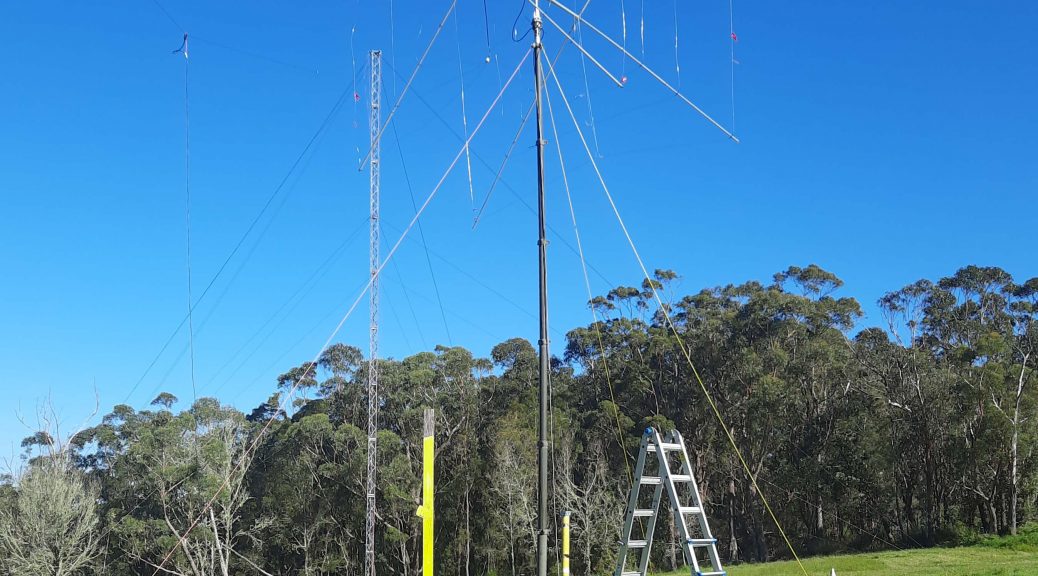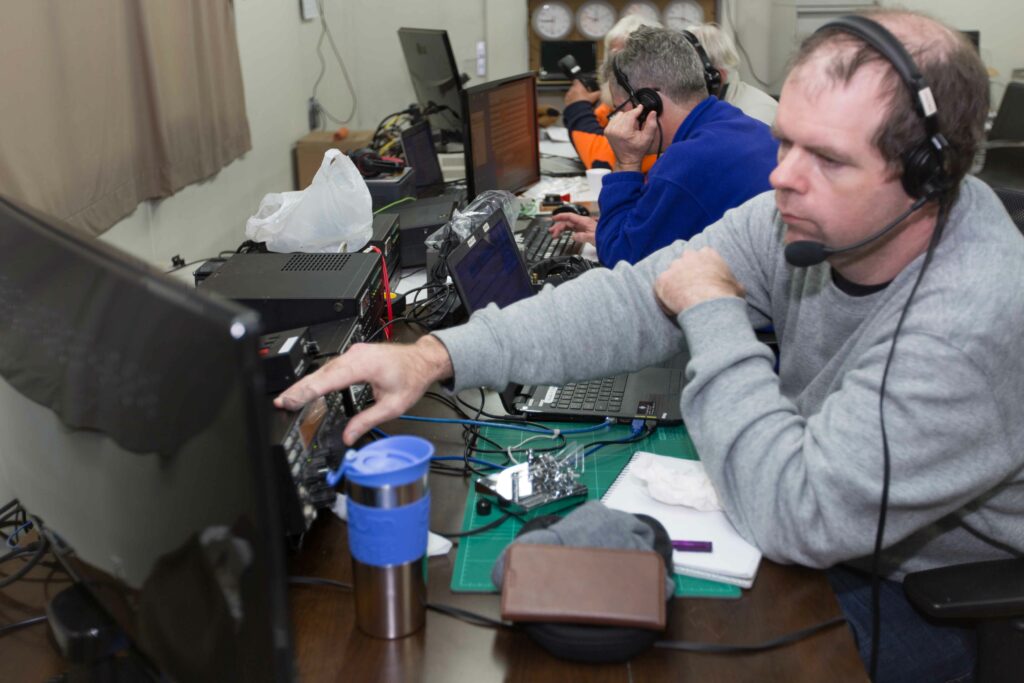A group of antenna builders travelled to Robertson on Saturday to finish off the installation of the donated cubical quad antenna.
These hams were Barrie VK2IBE, Skip VK2ALR, Stephen VK2RH, Raffy VK2RF, Bob VK2NRC and Fred VK2WS.
On a previous visit to build and erect this antenna we were forced to stop work as the mating of the boom to the spiders holding the spreaders appeared to be a mis-match. It was subsequently ascertained that the aluminium boom was out of round causing the issue.
For this visit we took the boom down and with a little ‘bush panel beating’ re circularised the boom end. With everything on the ground we were able to adjust and test fit things so we were sure that things would go back together when it was all up in the air for assembly.
We then fitted the reflector element and the radiating element to the boom, rigged the feedline and we were ready to extend the telescopic mast for testing.
This whole process sounds like a 5 minute task but all this took us about 5 hours.
The reflector of the cubical quad is a closed loop. We had initially not closed the loop as the length of the shorting wire was where the adjustment of front/back ratio was done.
Anyway, we measured the SWR, then lowered the whole antenna assembly, closed the reflector loops with some shorting wire and re-raised the antenna – and measured again.
The results were surprisingly good!
The SWR was quite flat across all three 10m, 15m and 20m ham bands. The lowest SWR (just below 1.5) was right in the low part of the SSB section (and so not that far from the CW section of the band) and even at the band edges the SWR was not higher than 1.5.
We tried rotating the antenna but quickly came across an issue where the wire termination on the reflecting element fouled the guy ropes. We lowered the antenna again and lifted the wire termination block as much as we could. Plus, we re-positioned two of the guy anchor points in closer to the mast to improve the angles. And then re-raised the telescopic mast.
We then hooked the antenna to a radio equipped with a pan-adapter and observed the signal strength of beacon signals. This was compromised a little by the fact that the beacons were DX and the ionosphere was causing some QSB. However, over an extended period of observation we feel that the antenna has a front/back ration somewhere in the region of 15-20dB. Which a very useful characteristic for our contesting operations.
As a parallel activity, we completed the replacement of the old kerb find laptop computers, with different operating systems, with three small form factor desktop machines all running the Windows 10 operating system. The desktop machines also have 10 USB ports which we need many of due to all the peripherals that are connected during contests. We also installed two 24″ monitors for each operator position and an external keyboard and mouse. This was done to improve the ergonomics and provide larger, brighter monitors with more screen real estate for the multiple windows we open up during contesting.
Raffy went through the process of cloning the HDDs the computers came equipped to SSD drives (for faster, crisper responses) and swapping the drives over.
So, in summary, we completed the tasks we set out to do and the contest site has been upgraded with a new steerable antenna and the operating environment has been upgraded too.
We are ready for some contesting.
73 Fred VK2WS





